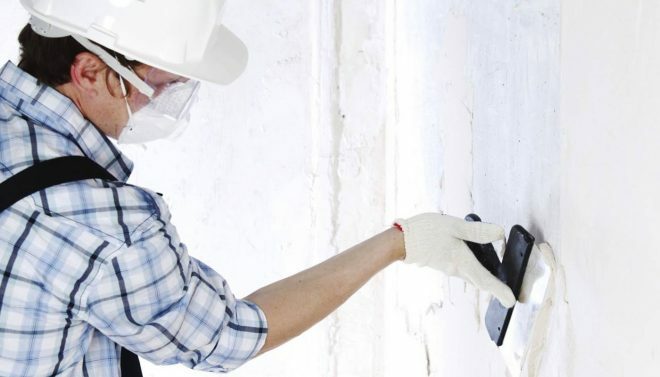- First type faults
- Second type faults
- How to disassemble a washing machine
Any modern family has a washing machine. Modern children are simply not able to imagine that things can be washed in some other way, After all, they have never seen it, and nobody needs it anymore. Washing machines free a large amount of time, we are so used to it, that when the machine breaks down, it looks like a catastrophe. What to do if the drum does not spin in the washing machine? Rhetorical question - you need to find the reason why it does not rotate, and eliminate it.
Faults of the first type
The first thing you need to unplug the washing machine from the mains and check with your hands whether the drum is spinning.
- If the drum is spinning in both directions, then the reason for the washing machine belt is automatic. If in such cases the drum does not rotate when the engine is running, then the belt is between the drum and the pulley. Or the belt wound on a pulley, blocked the drum, and therefore it does not rotate. To eliminate this cause of the malfunction, you need to remove the back wall of the washing machine and install the belt in place. If it is completely weak and shabby, it is better to replace it with a new one, only when buying, be sure to pay attention to the marking. It should be the same as on the old belt. The label indicates the number of wedges and the length of the belt.
- The electric motor simply erased the brushes, which during operation are shortened and lose contact with the collector. As a result, the electromagnetic field is not created and it is not enough to rotate the rotor. In this case, you can not hear the engine running. The elimination of this damage is to replace the brushes in the washing machine.
- A short circuit occurred inside the machine and the current stopped flowing to the motor. Find a specific place can only competent electrician diagnostics.
- Faulty tachometer responsible for the number of revolutions of the washing machine during the spin cycle. In this case, the drum stops only during the spin cycle, and during washing turns it normally. This failure requires the intervention of specialists.
- Broken programmer. The engine stopped running when the washing machine was turned on. Correction of damage is possible only by a specialist, since a flashing or replacement of an electronic module is necessary.
- A common type of malfunction - the drum is spinning, but weak. Most likely, the belt stopped turning, becausestretched from old age. It can be replaced by yourself.
Tip:
Read also: Why does a belt fly off on a washing machine?

Problems of the second type
The drum in the washing machine does not rotate at all, it is stuck, and it does not rotate even with the hand when the engine is off.
- Something stuck between the tank and the drum, such as a coin, button, stud, or any other small thing that could pass through a hole in the drum or a rubber hatch cuff. You can try to independently pull this object through the hole for the heating element.
- Another reason for which the washing machine is drawing water but not turning the drum is a burnt-up heater. Sometimes it explodes and blocks the entire unit with debris, the drum does not spin in the washing machine due to a mechanical obstacle. You can independently remove these debris and install a new TEH.
- Also the reason for which the washing machine is buzzing but does not twist the drum may become a jammed bearing. In this case, on the eve of a complete stop of the drum, the metal rattle is well heard during the operation of the machine. As soon as you hear these sounds, you need to immediately change the bearing along with the gland. If it scatters, it can cause a lot of trouble. You can independently replace the bearings in the washing machine, but it is better to entrust it to a specialist.
- Condenser broke, they were put in the old models near the engine. In this case, the engine is serviceable, but does not start. You just need to change the capacitor.
- The washing machine engine broke, either because of a leakage, or because of a voltage drop. In this case, the drum is easily scrolled by hand, but when the washing machine is turned on, the automatic switches operate.
How to disassemble a washing machine
The washing machine begins to be disassembled from the top cover and the front panel, each washing machine has its own approach. On all the machines, the fastening screws are hidden quite cleverly, you still need to find them. It is better not to touch the hatch of the typewriter, especially since there is a door slamming sensor with electric wires installed under it. To remove the cuff, it is necessary to bend its edge and remove the wire ring from the spring. Then take out the tray. Then you can safely remove the front panel.
- It is necessary to remove all clamps and rubber from the hose coming to the tray through which the powder is fed into the tank.
- If circumstances force, then you can remove the door, but it is better not to do it.
- The front panel must be pulled out carefully so as not to tear off the thin wiring of the slam-shut sensor.
- In the next step, the pressostat hose must be disconnected from the tank; it resembles a large pill with a large number of outgoing contacts located on top of the body. This is a water level sensor.
- Disconnect the drainage drain located in the bottom right corner. It looks like a black corrugated hose, sometimes white.
- Now you can remove the engine, after removing the belt from it. To do this, you need to insert a finger under the pulley and start rotating, the belt will fold without problems.
- The electrical wiring plug and ground are then disconnected from the engine, after which the bolts can be unscrewed. In most cases, the engine must be moved backward or forward. At the same time it is necessary to ensure that it does not fall down and does not break.
- Take a camera and take a picture of a suitable electrical wiring of the heating element so that you can return everything to the place and not confuse anything. After such a safety net it can be removed.
- Now the most difficult stage - you need to remove the screws that hold the balancing stones. These screws are massive, with big hats.
- Next, you need to carefully remove the spring, starting from the bottom, after which the tank can already be removed.

What's next? And then you need to disassemble the tank into 2 halves, for which you have to just break the plastic fasteners and get rid of the silicone gasket around the perimeter. When the pulley, axle and all components of the drum are removed, you can get to the bearings. The front bearing is usually much larger than the rear. Accordingly, when replacing it must be considered. After replacing the bearings, you need to assemble the machine in the reverse order.


